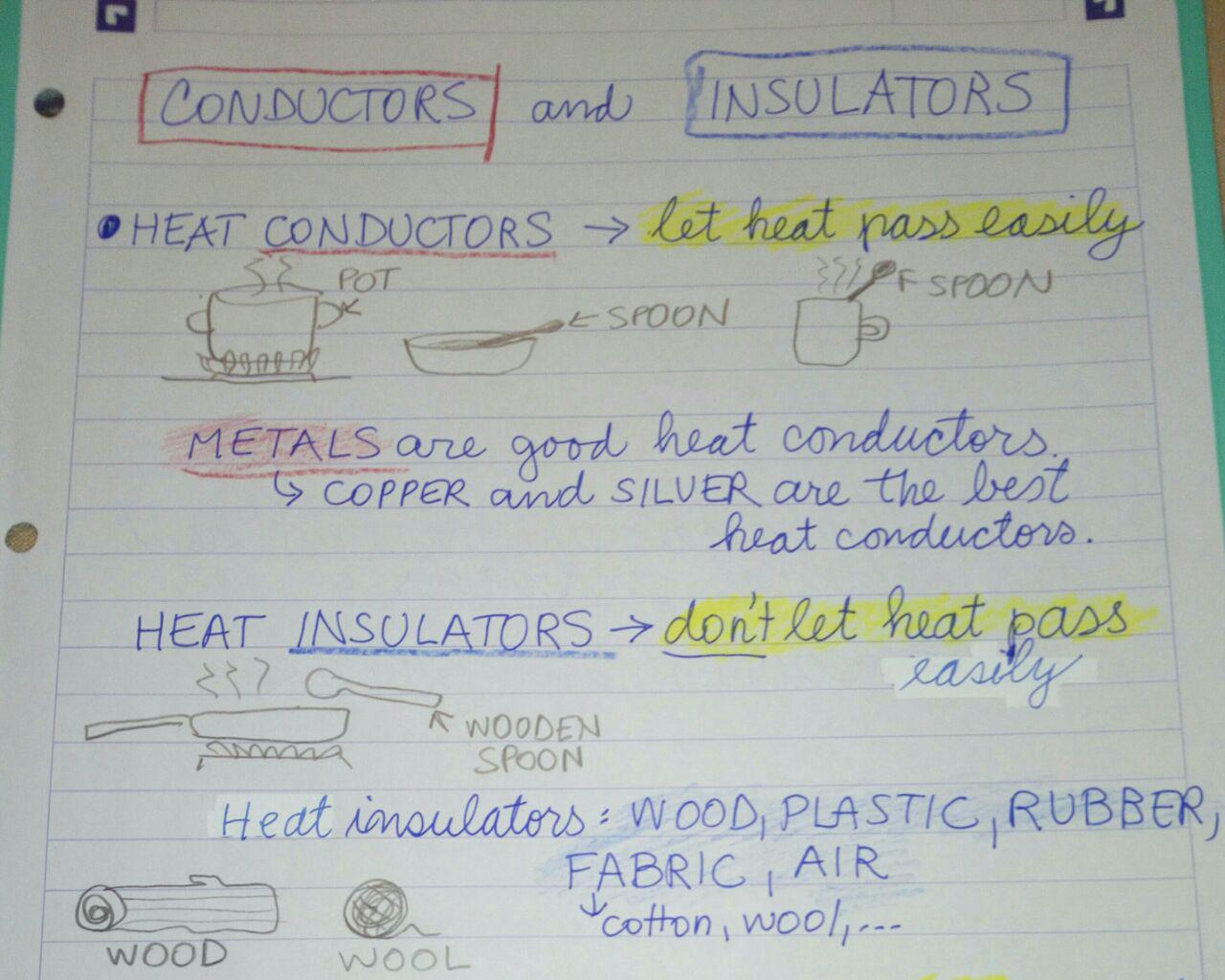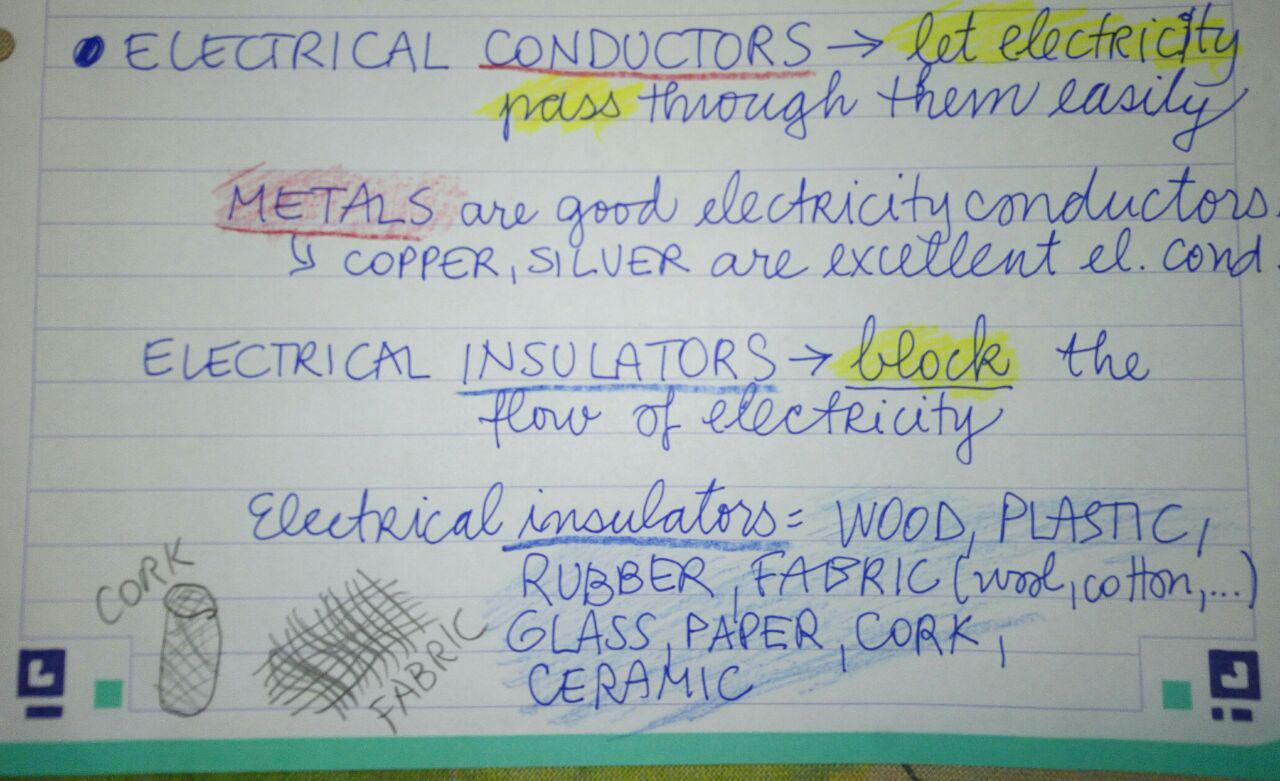Conductors and insulators of heat and of electricity for kids at primary school. Lesson plan.
L’argomento può essere affrontato separatamente o dopo aver parlato di materiali in generale (vedi il post Lapbook Materials) e/o dopo i metalli (post Metals).
STEP 1
Iniziamo con un piccolo BRAINSTORMING:
In the kitchen, when you cook pasta, what do you use to boil water? What is the pot made of? Now, what do you use to stir the pasta in the pot while boiling? What is it made of? What do you think, why?
N.B. Ho trovato come ottima preparazione dell’argomento per l’insegnante il sito didattico https://k8schoollessons.com/conductors-and-insulators/
Consiglio di consultarlo ed avere sotto mano magari una stampa del loro post 🙂
STEP 2
Scriviamo sul quaderno le informazioni più importanti sui HEAT CONDUCTORS AND INSULATORS.

STEP 3
Now, metals are not only good heat conductors but also good electrical conductors.
Prendiamo in mano il cavo del computer ad esempio. What is it made of? Could I touch it if it was not covered with plastic? Why? What other materials do you think are electrical insulators?
THINK: Why do we have to protect our body from electricity? Because our body is also a good electrical conductor.
Also water is a good conductor of electricity.
STEP 4
Scheda di ripasso/verifica: (include anche conoscenze del post “Metals”) Metals REVISION2



